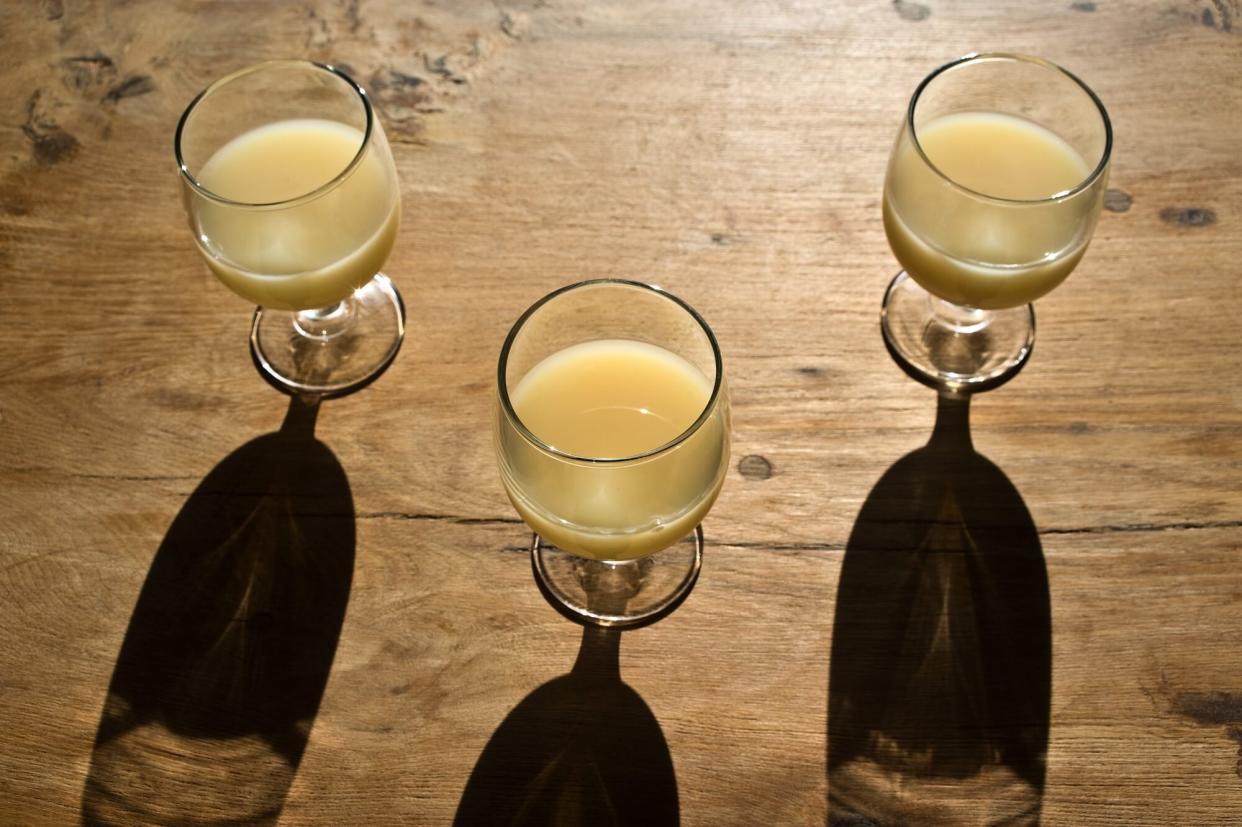Why the French Love Pastis—Plus, How to Enjoy This Iconic Anise Aperitif at Home

franck metois / getty images
On days when you want to bring the sun-kissed Mediterranean closer to home, pour yourself a pastis, an aperitif with an unmistakable anise taste and deep roots in the south of France. Considered the quintessential vacation drink, it's typically enjoyed by diluting one part pastis with up to six parts cold water in a tall glass, which turns the yellowish spirit cloudy.
But, of course, that's just one way to sip this storied spirit. And it's not the only anise beverage known for this distinct flavor. Here, we investigate the origins of pastis, why it became so popular in France, and how to enjoy pastis today.
Related: Classic Cocktail Recipes Every Home Mixologist Should Know How to Make
A Drink with Provençal Origins
For centuries anise has been used by various civilizations for its medicinal properties, including aiding digestion. It was only a matter of time before it found its way into the aperitif glass. Greek ouzo, Turkish raki, Syrian arak, and Italian sambuca all sing with anise flavors, as does the sweet, colorless French liquor anisette. Though similar, they're not exactly the same thing as pastis, especially high-end pastis.
So, what is pastis? "Pastis is a word from Provence dialect meaning 'mixture.' It was used to describe the common beverages of Provence, which mix several herbs, and with anise and licorice as common ingredients to almost all of them," explains Jean-Baptiste Robert, CEO of the U.S.-based Crillon Importers Ltd., which is owned by Distilleries et Domaines de Provence of Forcalquier in Provence. The distillery has been in operation for over 120 years, making aperitifs and liqueurs, including Henri Bardouin Pastis, and is owned by the Robert family.
Henri Bardouin Pastis blends over 65 plants and spices, culled from Provençal soil, and continents around the globe—star anise, cardamom, and black and white peppercorns among them. All of these flavors make the niche brand more complex than other pastis, including venerable brands like Ricard Pastis, and Pernod 51, owned by the beverage giant Pernod Ricard. Reflecting its heritage, Henri Bardouin follows original recipes from Haute-Provence (or Upper Provence) that can be traced back from the 17th through the 19th centuries. "The main characteristic of these recipes (compared to modern ones or the ones from other regions) is that Upper Provence's pastis have always included tens of herbs in their formula," says Robert.
A Green and Yellow Story
Why did pastis become so popular in France? In the late 19th century, phylloxera destroyed French vineyards and because they needed to replace wine Robert says, "Consumers turned massively to anise-based liquor in Provence, and absinthe in the rest of France." Absinthe, a wormwood-powered drink known as "the green fairy," was all the rage in France, and it was especially embraced by Parisian café society. Thanks to the concerted efforts of prohibitionists, it wasn't long for the early 20th century. "The 1915 ban on absinthe (banning the use of wormwood and alcohol about 45 percent) really framed the category of pastis," explains Robert. "If absinthe hadn't been banned, pastis would have remained a local name in Provence, for people (farmers usually) producing their own anise-based spirit, and I guess, it would have slowly but surely disappeared."
In the ensuing years, pastis, the descendant of absinthe, became a "little yellow" sensation in Provence, with brands brandishing their own safeguarded recipes. Pernod, the first to market absinthe, removed wormwood from its recipe, resulting in an aniseed liquor. (Pernod isn't called pastis because it has very little licorice, and its flavor comes from distillation, not maceration.) And in the 1920s, Paul Ricard got into the spirits game, making his drink with green anise, star anise, and licorice. By 1932, the Marseille native was marketing it as "the true pastis from Marseille." (The two companies joined forces, becoming Pernod Ricard in the 1970s.)
Beloved in France, and Beyond
Pastis remains very much in demand today, and is only slightly more popular in its home turf than other parts of the country, says Robert. "It's similar to Champagne which is popular in the rest of France, and ultra-popular in the Champagne area." Pastis has also gained a wider audience, becoming somewhat trendy beyond France's shores, which Robert attributes to either a growing interest in pastis itself or in herbal spirits in general, ultimately benefiting brands that are distilled from a breadth of herbs and spices.
And it's enjoyed, as mentioned, with water, une carafe d'eau at the ready, or in cocktails, such as le perroquet (the parrot) which mixes pastis with cold water and mint syrup, turning the drink green, like its predecessor. "You can use pastis in any cocktail where you'd use ouzo, raki, or sambuca. Most cocktails using absinthe with gin, vodka, or white rum, are also good with pastis," says Robert. Still, pastis is less versatile than absinthe, he notes, because the anise and licorice flavors are stronger, and the lack of wormwood makes it less amenable to certain fruits, or with many brown liquors.
However you drink it, shaken or stirred with other spirits or like a local in Provence, pastis, with its unique hue, colorful history, and sublime taste, is a worthy addition to your liquor cabinet. Raise a glass, toast your fellow drinkers' health (à votre santé!), and...bottoms up!

